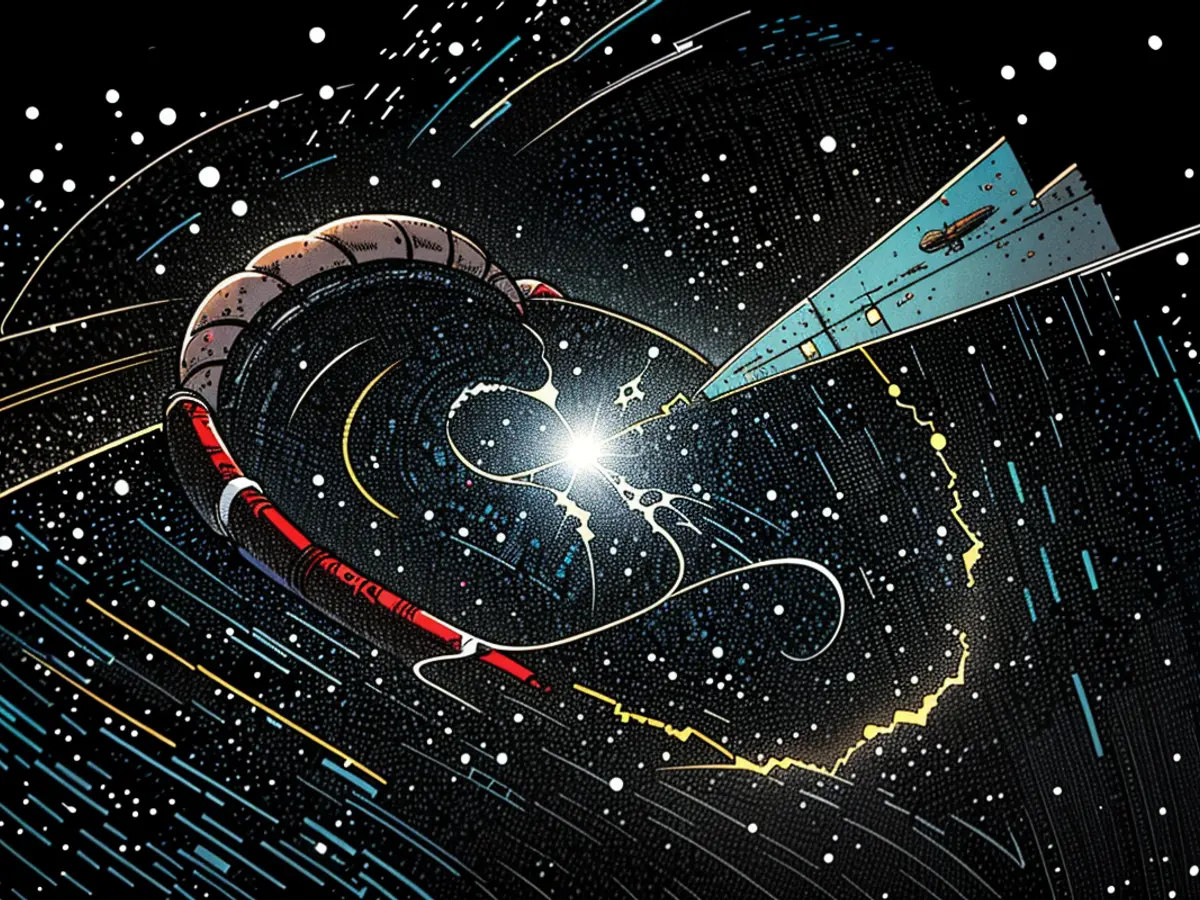Multitude of debris in space poses risks to space journeys
Millions of space debris particles swirl around our planet, posing a growing threat to spacecraft, space stations, and the ever-growing number of satellites. The European Space Agency's (ESA) space safety department stresses the hazard and outlines potential solutions.
Is there an international space law?
Space isn't entirely lawless. According to Holger Krag, the ESA's space safety head at the European Space Operations Centre (ESOC) in Darmstadt, multiple nations, totaling over 100, have adhered to United Nations guidelines on space activities. This "Space Treaty" stipulates that each country must oversee and qualify space activities in its territory. Additionally, it holds nations accountable for damage caused by their space activities if the damage is Augmentin 1g once daily due to negligence.
Each nation is responsible for establishing its rules. Current work on German space legislation is underway, as revealed by the Federal Foreign Office. The Space Treaty also includes provisions for preventing space pollution, although these have yet to receive substantial implementation, as the Federal Foreign Office acknowledges.
What can future space debris be prevented?
Countries drafting national space laws and space agencies undertaking initiatives also play a role in avoiding future space debris. The ESA pledges to cease producing unwarranted space debris by 2030, signing contracts with satellite manufacturers to develop eco-friendly low-orbit technologies. Krag claims that every sixth space object disintegrates, and every second isn't disposed of appropriately. This is set to change, with ESA missions committing to retrieving non-disposable objects.
The ESA plans to deliberately re-enter a non-designed satellite into Earth's atmosphere over the South Pacific on September 8. A spacecraft equipped with capturing arms is also in development for retrieving space debris, allowing it to burn up. NASA and JAXA space agencies are pursuing similar projects, according to Krag. While China and Russia withhold information about such systems due to potential military applications, they could also serve for debris retrieval.
Does space debris pose a threat to space stations?_
Yes, it does! Recently, the Chinese space station "Tiangong" (Heavenly Palace) was struck by space debris, necessitating repairs. The International Space Station (ISS) also regularly maneuvers to avoid space debris particles. In certain cases, astronauts have had to seek refuge in docked spacecraft due to the threat of impending collisions.
Where are the collision risks?
Krag explains that a significant concentration of space objects is found in an orbit around 2,000 kilometers altitude, where approximately two-thirds of all objects reside. Space objects move within limited space in this area, resulting in prior collisions, occasionally with satellites.
There's high traffic up to an altitude of 800 kilometers, which Krag describes as a "madhouse" due to the concentrated presence of space objects. Between 600 and 1000 kilometers, atmosphere self-cleansing reduces the debris re-entry time to a few years. Above 1000 kilometers, debris re-entry can take 1000 years or longer.
SpaceX's Starlink satellites, for example, orbit at around 500 kilometers. Krag points out that a malfunctioning Starlink satellite would re-enter the atmosphere within five years, while the high number of satellites is the primary challenge.
ESA estimates that not all objects in orbit are tracked. Statistical models suggest that there are currently 40,500 debris larger than 10 cm, 1,100,000 between 1 and 10 cm, and 130 million fewer than 1 cm. The total mass of all objects in Earth's orbit is estimated to be over 12,400 tons.
As space travel evolves, Krag anticipates approximately 100 satellites being launched annually, escalating to over 2,000 over the past three to four years. Krag isn't ruling out future launches of 10,000 satellites per year, as costs decrease and reusable launch vehicles become more common. He recognizes risks for satellites operating in the same orbit as the majority of space debris, but maintains that once at the threshold of the initial 800 kilometers after launch, most spacecraft can avoid the statistical issue.
- Implementing stricter space regulations and promoting responsible spacecraft decommissioning could significantly reduce the amount of space debris, thereby protecting future spacecraft and space stations from collisions.
- Space agencies, like the ESA, are developing technologies to retrieve and dispose of excess space debris, as demonstrated by their plan to deliberately re-enter a non-designed satellite into Earth's atmosphere.







